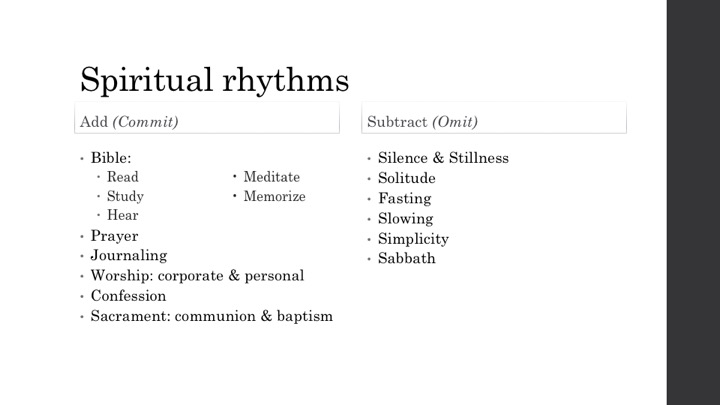Before my wife and I were married, I spent a summer in Europe while she remained in California. In those long-past days before email and cell phones, at a time when international calling was expensive and minimum wage was a fraction of what it is now, the primary way we communicated was through letters; our words would be read days, if not weeks, after they’d been written.
Growing in relationship with God demands that we read his words—his Word.
If you want to know God, you need to read his word to his people—that is, the Bible. Seems easy enough, but considering that the Bible contains sixty-six individual books written by dozens of human authors over a period of some 1,500 years—the most recent being roughly 2,000 years old—the natural question is, where to begin?
Many people say you should start with the book of John, or perhaps one of the other four narratives of Jesus’ life: Matthew, Mark, or Luke. But if you’re new to the Bible, then I suggest following Fräulein Maria’s advice from The Sound of Music: “Let’s start at the very beginning”—Genesis and Exodus. You see, Jesus was a Jew, and Genesis tells the story of the beginning of the Jewish people. And since Jesus came as a sacrifice to save people from sin, Exodus—the story of God saving the Jewish people from slavery in Egypt—lays the foundation for Jesus’ sacrificial life and death. Then read John. Or Matthew, which was written to a primarily Jewish audience.
But another question to ask is, how do I read the Bible? The Bible is unlike any other book you have ever read. It is an anthology of sorts, with each individual book telling a complete story; yet the collection as a whole also tells a complete story, and each book contains a part of that broader story. Perhaps the best way to answer the question, how do I read the Bible?, is this: Read it the same way you would see the country. The whole country. What country? Yours or mine, whether the United States or Nigeria or India.
If you want to see the whole country, you will need to do it in different ways at different times. At times you will fly over from one corner to another; you’ll only get 35,000-foot glimpses of most of the land, but you’ll see it from a unique perspective. Other times you’ll take a car; you’ll see more than flying—mountains and rivers, deserts and oceans, cities and vast spaces of empty land—but most will still be zooming past at sixty miles per hour.
Then there are times you will just walk. You’ll never get out of the city or the forest or the desert, or wherever you started walking, but you’ll see the details; you can sit for hours on a beach and watch the tide slowly roll in, covering the rocks and tide pools you explored earlier in the day; you’ll gaze in awestruck wonder at the intricacies of a rose just before it bursts into bloom.
Reading the Bible is like that. You’ll be reading of Jesus’ Last Supper with his disciples, then fly back to the first Passover meal in Exodus. Or you’ll read the entire book of Romans in one sitting and you’ll see the changing topography of Paul’s treatise. And sometimes you’ll sit and soak in the creative beauty of a single verse or a paragraph, turning each word over in your mind like a rosebud between your fingers.
We’ll explore this more in future posts. For now, though, decide where and how you want to begin, then begin. If you’re just getting started, set yourself a reachable goal: read 5-10 minutes a day, three days a week.

